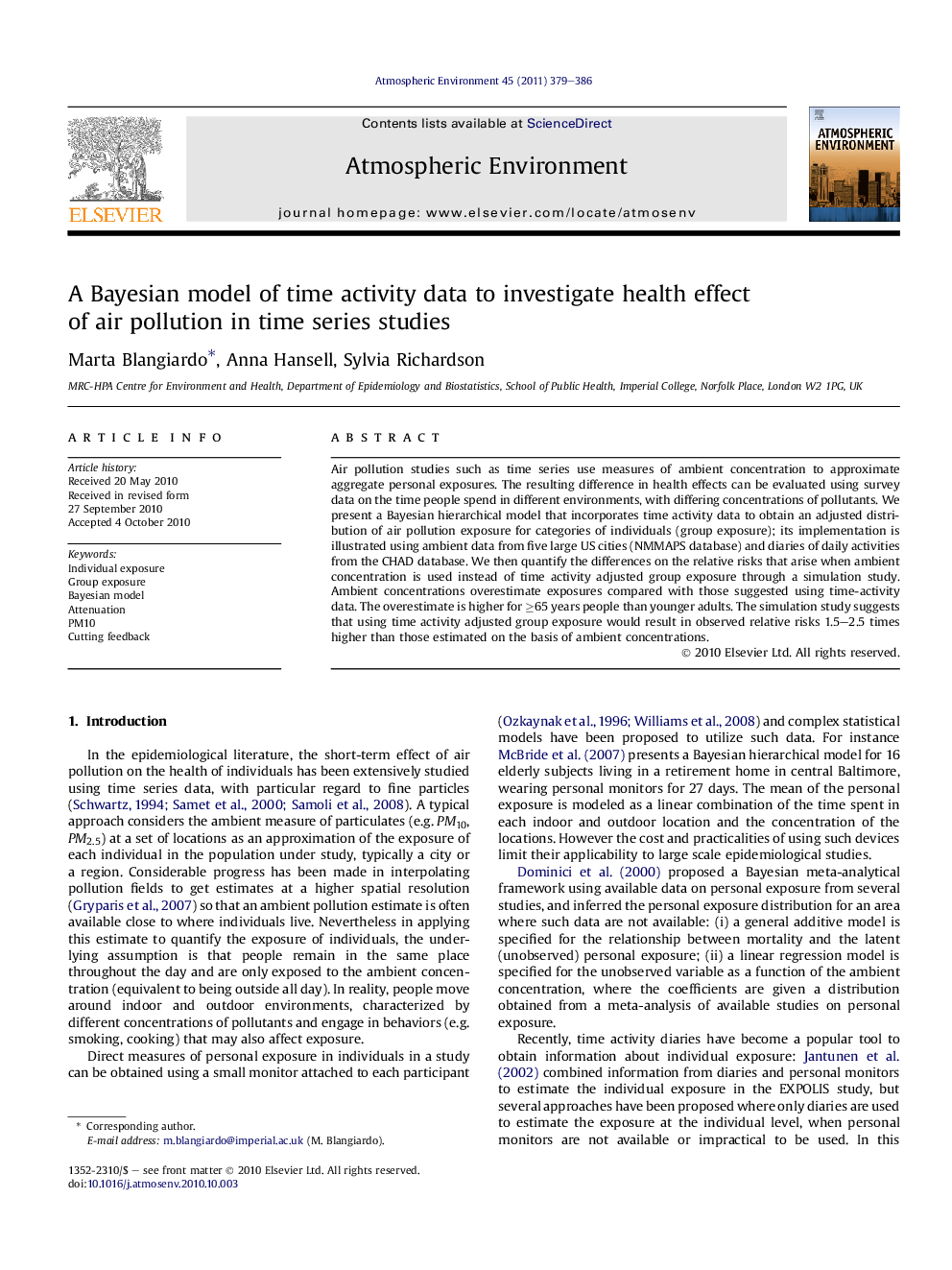| Article ID | Journal | Published Year | Pages | File Type |
|---|---|---|---|---|
| 4440175 | Atmospheric Environment | 2011 | 8 Pages |
Air pollution studies such as time series use measures of ambient concentration to approximate aggregate personal exposures. The resulting difference in health effects can be evaluated using survey data on the time people spend in different environments, with differing concentrations of pollutants. We present a Bayesian hierarchical model that incorporates time activity data to obtain an adjusted distribution of air pollution exposure for categories of individuals (group exposure); its implementation is illustrated using ambient data from five large US cities (NMMAPS database) and diaries of daily activities from the CHAD database. We then quantify the differences on the relative risks that arise when ambient concentration is used instead of time activity adjusted group exposure through a simulation study. Ambient concentrations overestimate exposures compared with those suggested using time-activity data. The overestimate is higher for ≥65 years people than younger adults. The simulation study suggests that using time activity adjusted group exposure would result in observed relative risks 1.5–2.5 times higher than those estimated on the basis of ambient concentrations.
Research highlights► Time activity adjusted exposure is smaller than the ambient concentration. ► Ambient concentration leads to an attenuation of the relative risk of disease. ► The group exposure approach allows to easily compare several scenarios. ► The fully Bayesian approach leads to smaller exposure-larger relative risks
